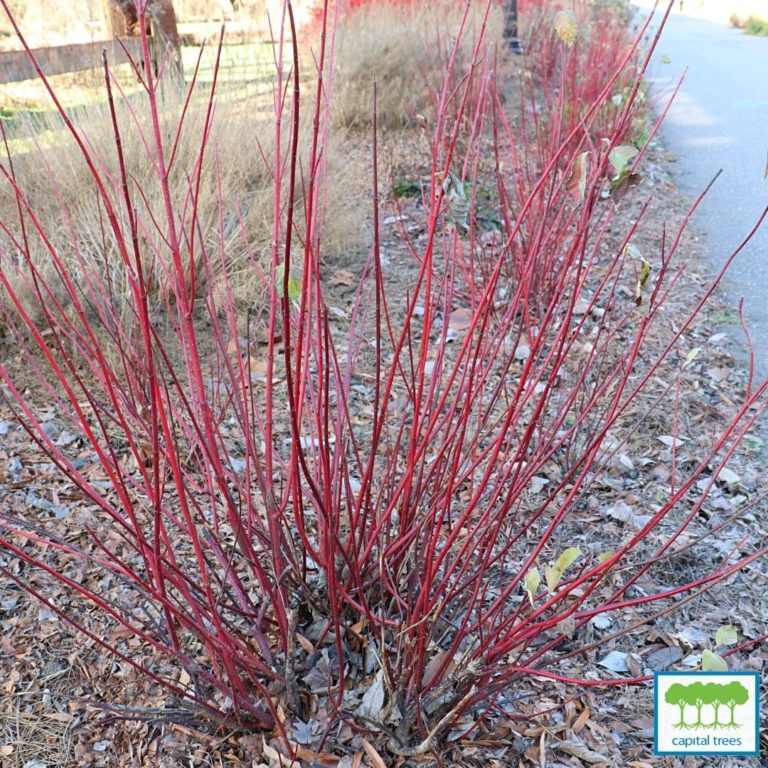We’re kicking off 2022 by featuring one of our favorite landscaping plants, the Red Twig Dogwood Cornus sericea which you can find in many of the beds at the Low Line. You may be more familiar with its relative the flowering dogwood Cornus florida, Virginia’s much loved state tree AND state flower. Conversely, with very small white blooms, the shining feature of red twig dogwood is, you guessed it, the stems!
In the fall and winter young stems and foliage turn red, and its vibrant appearance makes this dogwood a standout in winter gardens. During the spring and summer, this growth is less conspicuous and is light green in color. Mature bark remains a light brown regardless of the season, so the plants are often routinely pruned in a landscape setting for their young twigs and to create a shrubbier growth habit.
There are 16 dogwood species native to the United States, and the red twig dogwood is the most widespread. It can be found across most of the country, with the exception of the deep south and the lower midwest. There is some debate as to whether the red twig dogwood is native to Virginia. Historical reference, and most range maps seem to suggest that it was not naturally found, or rare to find, in Virginia.
Despite its infrequent occurrence in the state, the widespread nature of the red twig dogwood indicates its ability to thrive in a variety of locations. This makes it a good fit for an area like the Low Line where our plots deal with unusual extremes. This shrub prefers full sun to partial shade and it can even tolerate temporary flooding! The layering root growth of this plant also makes it a great addition to banks for stabilization. If these many amazing features aren’t enough to celebrate, red twig dogwood has even more ecological value.
The white blooms that appear in late spring and early summer are appealing to a wide range of pollinators. After pollination the flowers develop into small white berries, or drupes. These drupes have an above-average fat content which makes them a valuable source of food for songbirds, game birds, and waterfowl. Small rodents, rabbits, and deer are known to nibble on other parts of the shrub and it also plays host to the larvae stage of Spring Azure butterflies.
When you visit the Low Line during the winter months, see if you can spot the red twig dogwood – the red color of the young growth will help you identify it!
https://www.fs.fed.us/wildflowers/plant-of-the-week/cornus_sericea.shtml
https://www.illinoiswildflowers.info/trees/plants/ro_dogwood.htm
https://www.wildflower.org/plants/result.php?id_plant=cose16
https://naturalresources.extension.iastate.edu/forestry/iowa_trees/trees/red_osier_dogwood.html



